The vintage watch collecting market took an interesting turn in 2018 and 2019. Generally speaking, 2014-2018 had seen an explosion of interest in a wide variety of brands in the $10,000+ price bracket, the past couple of years saw many well heeled collectors fleeing back to the safe shores of stalwarts like Patek Philippe, Audemars Piguet, and (of course) Rolex. Some may decry this as a myopic approach to collecting, but I don’t blame people with six- or seven-figure collections for being cautious. From a financial perspective, there’s no shame in seeking out assets that are more likely to withstand an uncertain economic and political future, and in fact, some well-studied collectors can even thank this market trend, as it has prevented vintage prices for brands such as Zenith and Movado from following the same trajectory that brands like Universal Geneve and early Longines exhibited in years prior.
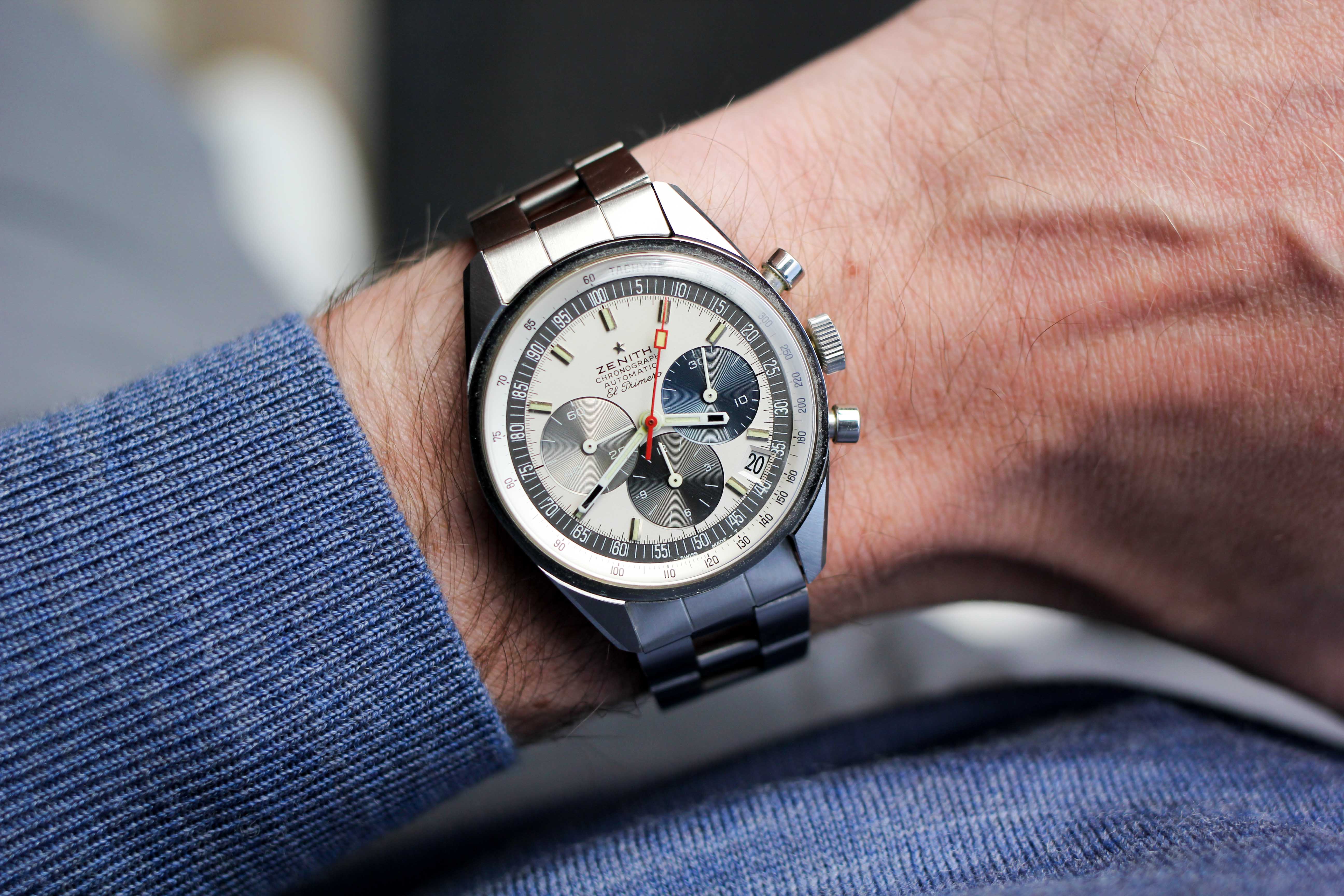
I was interested in the Zenith A386 El Primero long before watch collectors embarked on a Dunkirk-like retreat from non-Holy Trinity brands. In fact, in 2014, I marked my top-five aspirational “grail” watches for the near future and the A386 made the cut. I don’t profess to be a devoted fan of vintage Zenith, but the A386 had a number of things that were attractive to me, both from a collectability and aesthetic standpoint. In particular, the movement is one of the most important innovations in the history of Swiss watchmaking and the aesthetic remains generally congruent to this day, almost like a bizarro world Speedmaster. Some dealers and collectors use the word “iconic” and “historically important” to describe a wide swath of brands and references, but in the El Primero’s case, it is not hyperbole to include those descriptors. For the uninitiated, I’ll explain why.
In 1969, an arms race was breaking out across Switzerland and Japan. Self-winding “automatic” movements had become standard in time-only wristwatches, but amazingly, a self-winding chronograph movement had yet to be invented. The race for the first automatic chronograph was a three-way battle between Zenith, Heuer (in collaboration with Breitling and Hamilton), and Seiko, with each group taking a different approach to the challenge.
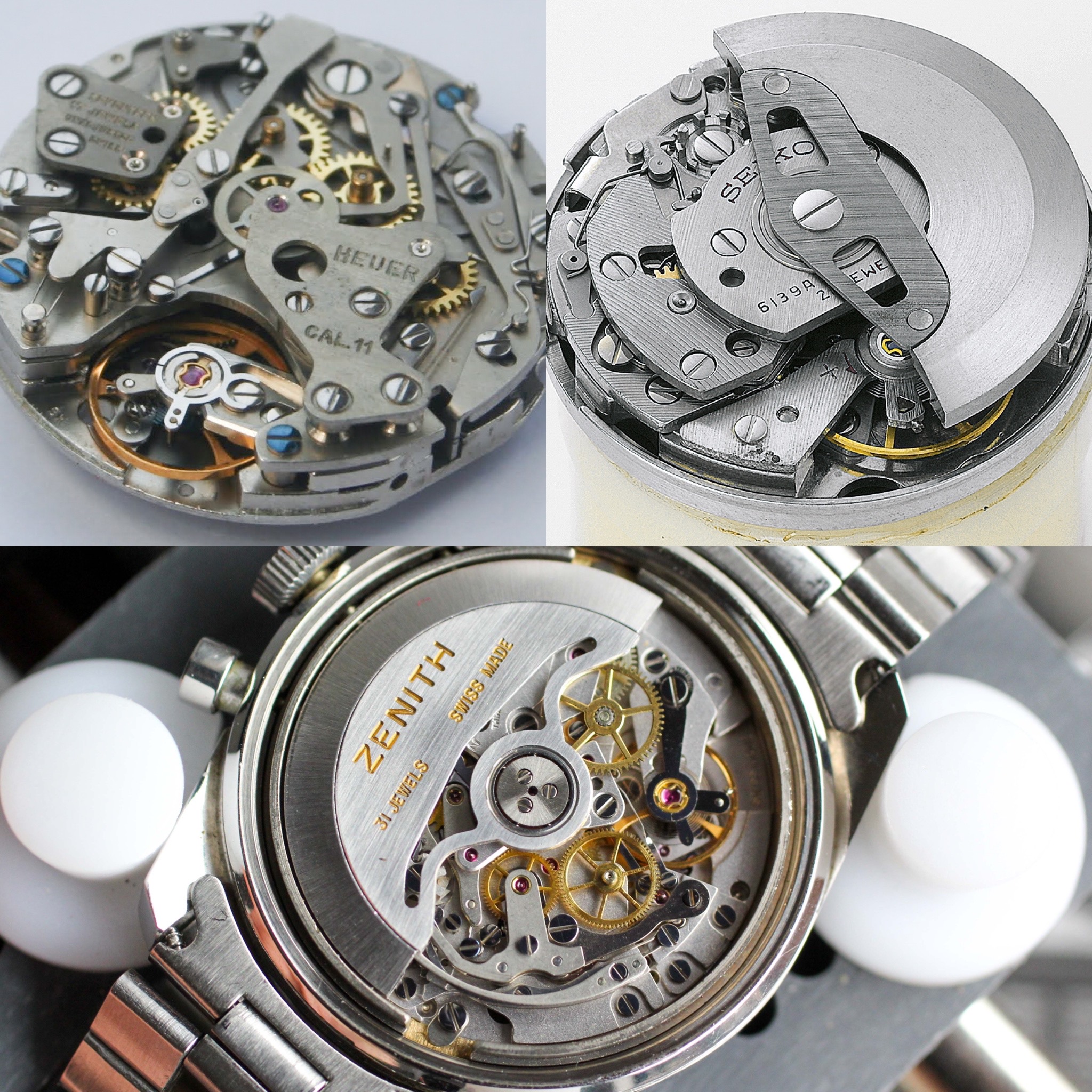
We’ll start with Heuer’s Calibre 11, which was introduced in March 1969. The Calibre 11 was a cam-actuated movement with a modular structure (i.e. a chronograph module added to a “base” movement, rather than built into the movement) that utilized a weighted micro-rotor and had a beat rate of 19,800 vbh, but the movement suffered initially from reliability issues and necessitated a chunky case shape in early Autavias and Carreras due to the movement’s 7.7mm height. While the aesthetic of the early “Chronomatic” Heuer models has aged quite well, the Calibre 11 movement was quickly upgraded to more reliable and technologically advanced iterations in future years (the Cal 12, Cal 13, etc.), creating a somewhat murky legacy for the initial Chronomatics and Calibre 11 movement (in my opinion).
The next contestant was the Seiko caliber 6139, which was an integrated, column wheel chronograph that utilized a center-mounted rotor and had a beat rate of 21,600 vph. The caliber 6139 was first utilized in the Seiko Speed-Timer, which was introduced in May 1969, and while the caliber 6139’s design is considered by some to be a finer movement than the Caliber 11 in terms of accuracy and its integrated, column wheel structure, the Speed-Timer lacked a running seconds display as well as an hour counter (the only chronograph display was a 30-minute subdial at six o’clock, though the subsequent release of caliber 6138 in 1970 would add that functionality). The watch also featured a bulky, cushion case shape that created a chunky wrist feel and aesthetics that have become quite dated in the ensuing decades. Finally, Seiko struggled to gain traction in the European and American markets, which rendered the 6139 more of a footnote than a primary contender in the automatic chronograph battle.
And then there was Zenith’s entry into the fray.
The A386’s movement (the 3019 PHC) has been written about and studied for decades, and with good reason. When compared to its rivals, the architecture of the 3019 PHC was better designed, slimmer, and oscillated at a much higher rate than other movements (36,000 vph), which allowed the chronograph to time in intervals down to 1/10 of a second and had the added benefit of the hands rotating in a seamless “sweep” across the dial. In what is perhaps the greatest testament to the 3019 PHC’s legacy, Zenith’s modern El Primero chronographs still use the movement, essentially unchanged from the original design that was unveiled as a prototype in January 1969.
While the technical sophistication of the 3019 PHC is undisputed, the dial design compares favorably to its competition as well. A matte white center was dotted with metallic, tri-colored subdials and applied hour markers, and was further complemented by a dark decimeter ring and white tachymeter scale. The watch thrives on contrast, both through the use of color (six different colors are utilized) and finishing (matte versus metallic), and has to be seen in the metal to be fully appreciated. Finally, the 38mm case featured angular, sloped lugs that caused the A386 to hug the wrist in a unique way. The aesthetic is both of its time and forever contemporary; just as home in 1969 as it is in Zenith’s current lineup.
Collectors of Seiko, Heuer, and Zenith may still be in a pissing match over who technically won the sprint to release a self-winding chronograph movement, but in my opinion, Zenith won the marathon…handily. There are very few watches that were nailed so perfectly on the first try, and it’s for all of the reasons above that the A386 was a multi-year pursuit for me.
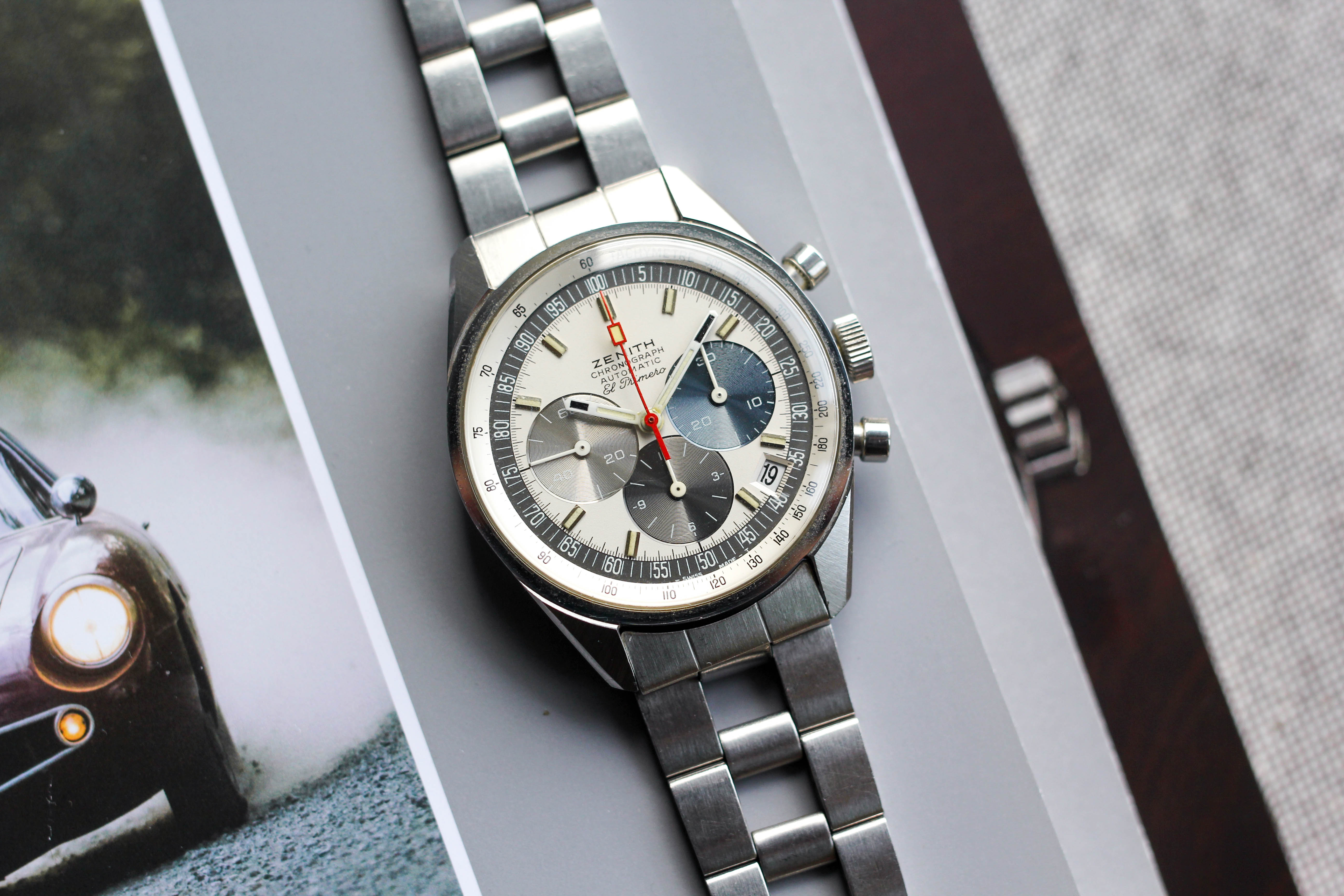
The A386 example that now resides in my collection was the first lot in Bukowski’s winter 2018 auction, and if there’s such thing as “love at first sight” with watches, this certainly qualifies. I’ve never worked in an auction house, but I imagine that choosing the watch that will have the distinction of being “Lot 1” is a bit of game theory. It needs to be attractive enough to encourage strong bidding out of the gate, but not so desirable that bidders spend all of their money in the first two minutes and then sit on their hands for the rest of the auction. If that was what Bukowskis intended with this A386, I’d say they chose wisely.
The bidding for Lot 1 featured a handful of suitors in the beginning before narrowing to a one-on-one battle between another party and me. I usually try to remain disciplined in my collecting philosophy, but there are times when I feel cracks in the binding of those rules, and when the auction narrowed to a fight between two suitors, it was time to throw the rule book out the window. A flip switched and I simply was not going to yield. I had wanted a nice A386 for years, and now I wanted this A386.
In the end, my continued and immediate bid increases may have signaled to the other bidder that I wasn’t going anywhere, and the gavel came down at a price that may have been slightly ahead of the market. More importantly, however, I got my watch, and when thinking about the reasons for its collectability, I have no doubt that my exuberance will be rewarded over the long haul.

The Nitty Gritty
The reference A386 was estimated to have been produced in only 2,500 examples spread across three different variations. I will very quickly summarize the main differentiators between the executions, but please visit this site for a full overview. The first iteration (or “Mk1”) is extremely rare (estimated to have been produced in the low-hundreds of examples), and is most clearly identified by its plain caseback, lack of a groove between the case and lugs, and thin subdial hands. Mk2 examples (such as mine) added a groove between the case and the lug, still utilized a plain caseback, and thicker subdial hands that extend through the full register. Finally, the Mk3 is most clearly identified by shorter, pointed subdial hands and a four-pointed star on the caseback.
Though it’s touched upon earlier, it’s worth mentioning how well preserved this example remains. The case appears virtually untouched and it’s quite possible that the watch has never been serviced, as the caseback does not bear any engravings or markings. There is minor discoloration at the base of the hand stack, but when it comes to a thorough inspection…that’s about the only dirt that shows up. Roughly six months after prevailing in the Bukowskis auction, I was also able to pair it with an original Gay Frères “ladder” bracelet, complete with correct “ZJ” end links. These components are extremely difficult to find, and the result when paired with the watch is nothing short of stunning.
As for the aesthetic itself…put simply, it’s either something you’re into or you aren’t. Personally, I find the contrast between the matte dial and shimmering, tri-colored subdials to be a feast for the eyes, both on the wrist and in pictures, and the case is contoured perfectly for nearly any wrist.

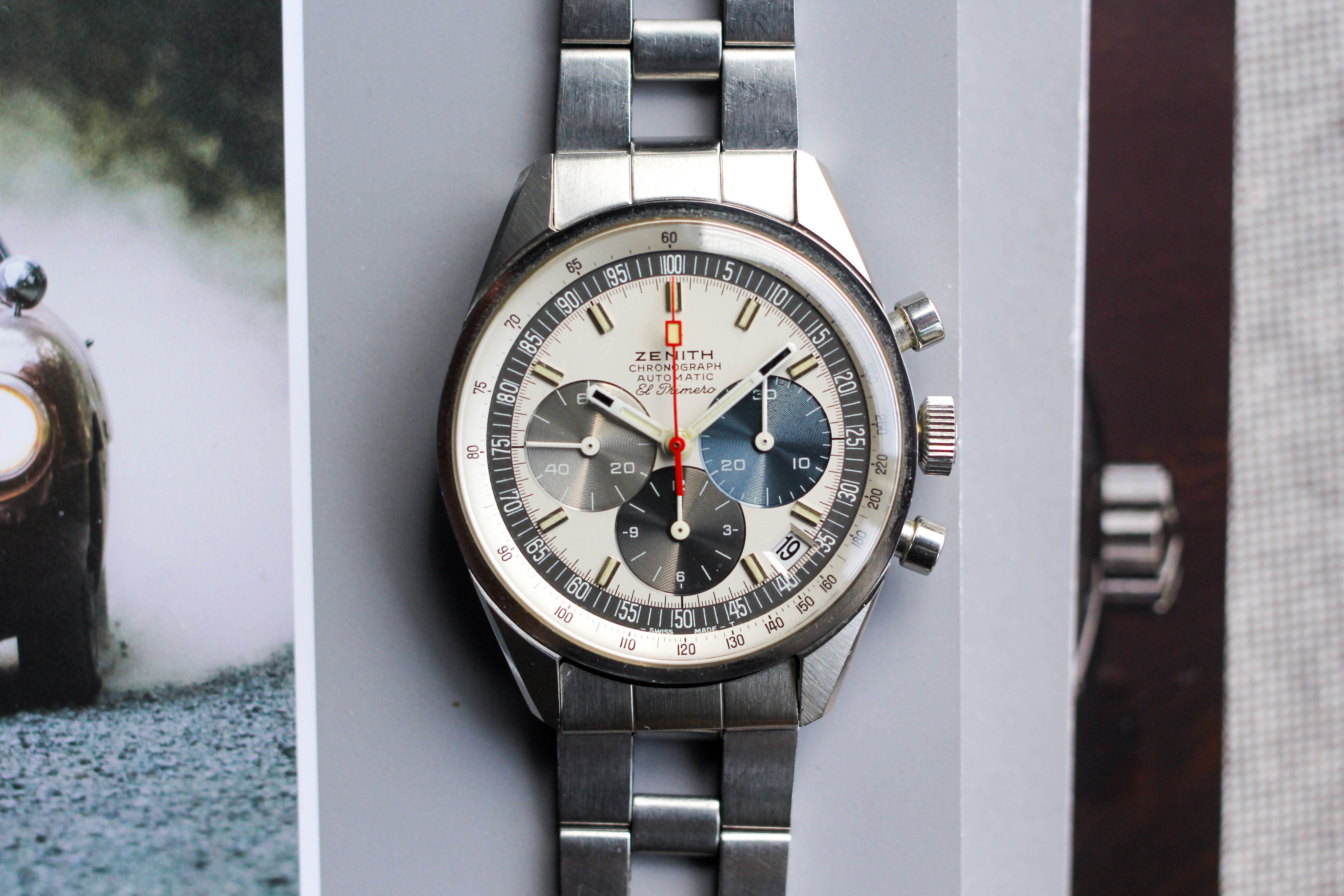
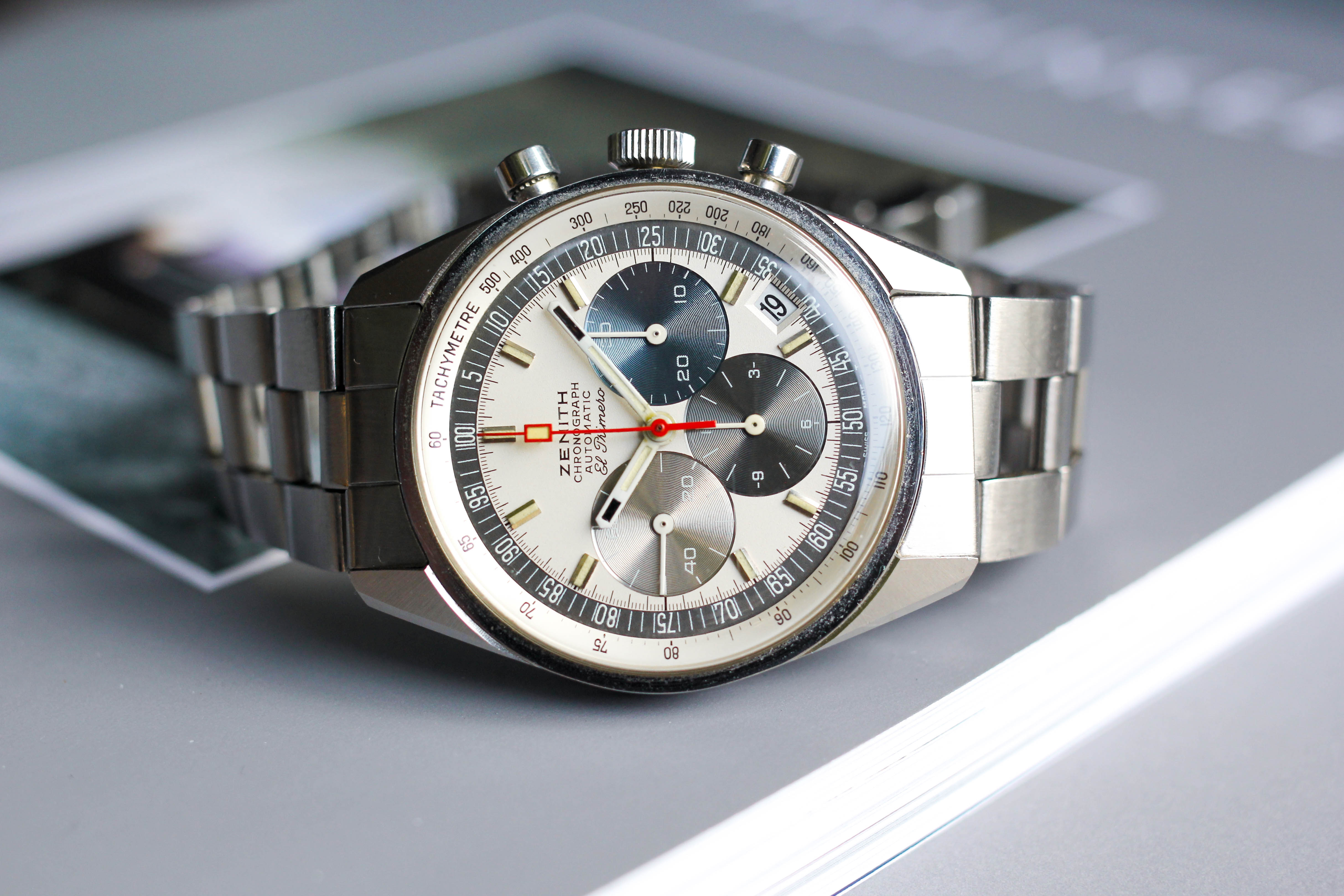

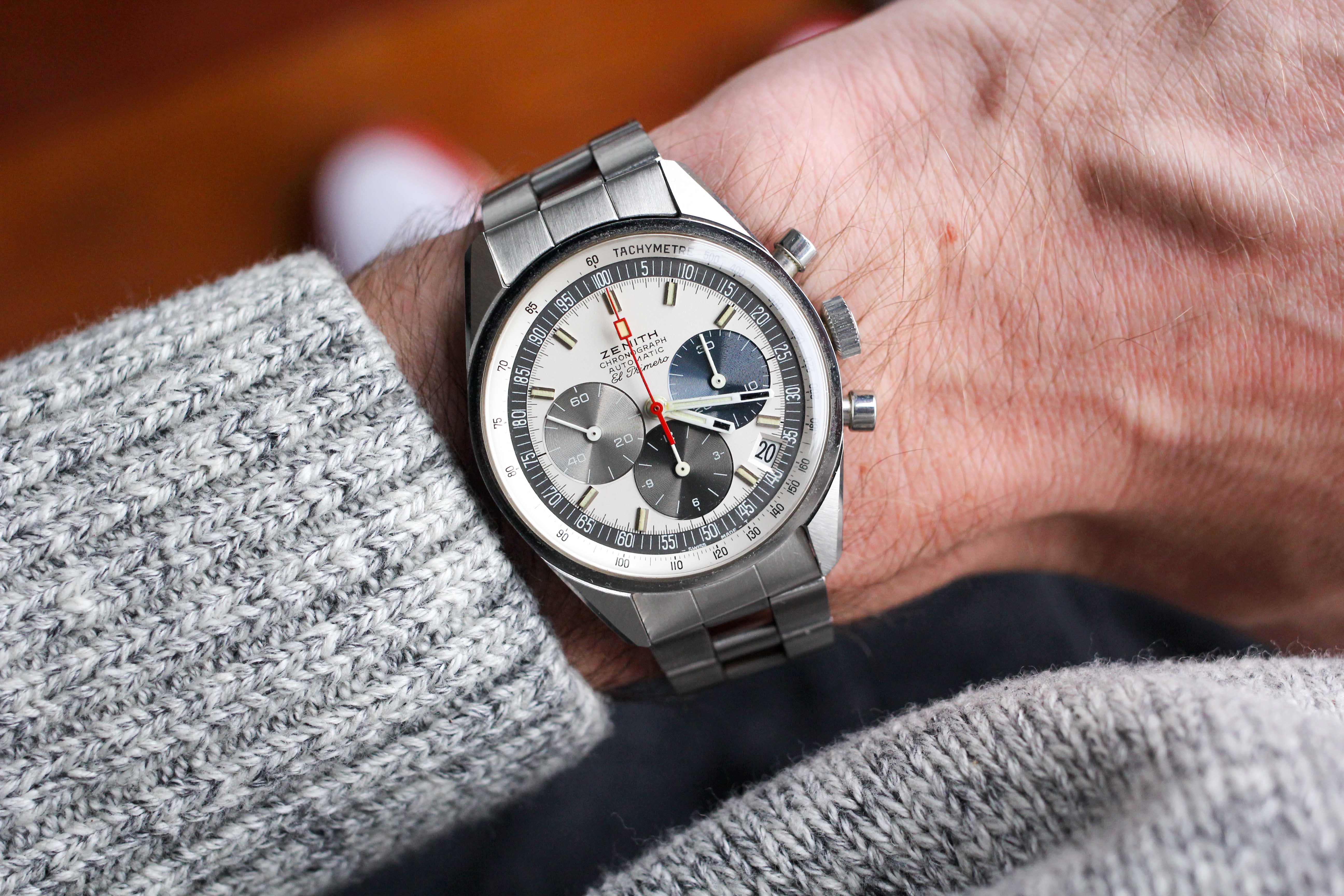
Additional Sources: OnTheDash, Hodinkee, Monochrome Watches, WatchTime, and Alpha Hands.